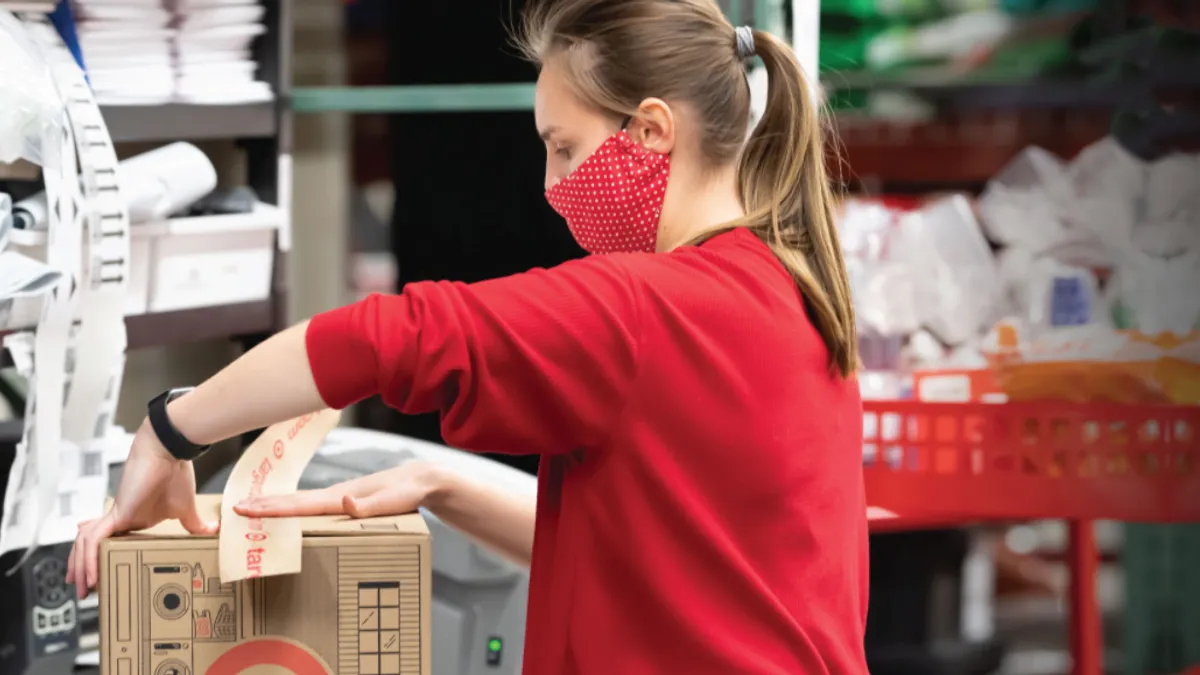Dive Brief:
- Target opened its first post-store sortation center, located in Minneapolis, in Q3 to smooth out runaway digital order volume, most of which is picked and packed in stores, COO John Mulligan confirmed on a Wednesday earnings call. Mulligan first teased the sort center concept in May.
- Store throughput, or total sales per square foot, has increased roughly 19% so far in 2020 compared to the same period last year, according to Mulligan, which the COO held up to demonstrate the company's ability to continue to build capacity within the store-centric model for digital order fulfillment.
- Target's digital sales grew 155% YoY in Q3, and the company fulfilled 75% from stores. For peak season, the retailer is cross-training at least 50% of in-store team members to support fulfillment work.
Dive Insight:
By fulfilling more than 95% of all sales from stores, Target said it's taking advantage of its best assets. But store-centered fulfillment of nearly all orders from any channel adds pressure to get product in and out of stores fast and efficiently.
Target has been committed to this model for years, but 2020 upped the stakes as same-day services and e-commerce grew in months at a rate the executives expected in years.
Operational capacity to handle that growth is the sum of replenishment and fulfillment, the COO said. Target has spent years optimizing store-based fulfillment and built a custom tech stack to tackle replenishment, but Mulligan suggested there is still room to build up.
Sortation centers are one such effort.
"By moving the sorting and staging process out of the stores, it frees up backroom space, enabling additional throughput," Mulligan said. In this first test center, packages will be transported from stores in the area to the sort center multiple times per day.
While increasing capacity, the center will also have the potential to reduce split shipments if items that may have previously shipped from separate stores can be combined and repacked at sort centers. Mulligan said technology from Deliv, a same-day delivery startup Target acquired earlier this year, is helping to more optimally assign packages to carriers and reduce shipping costs.
"Our expectations are that investing in sortation centers will be a more capital-efficient way to add capacity and we'll be assessing that potential through the test," Mulligan said.
Order routing is another source of potential untapped capacity. Target routes e-commerce orders to stores with lower in-store sales volume. For peak season, the stores with a high volume of e-commerce fulfillment versus in-store sales may also receive temporary remodels to claim more space for order packing, and the company is taking into account same-day services and back-of-house fulfillment into new store designs and model.















